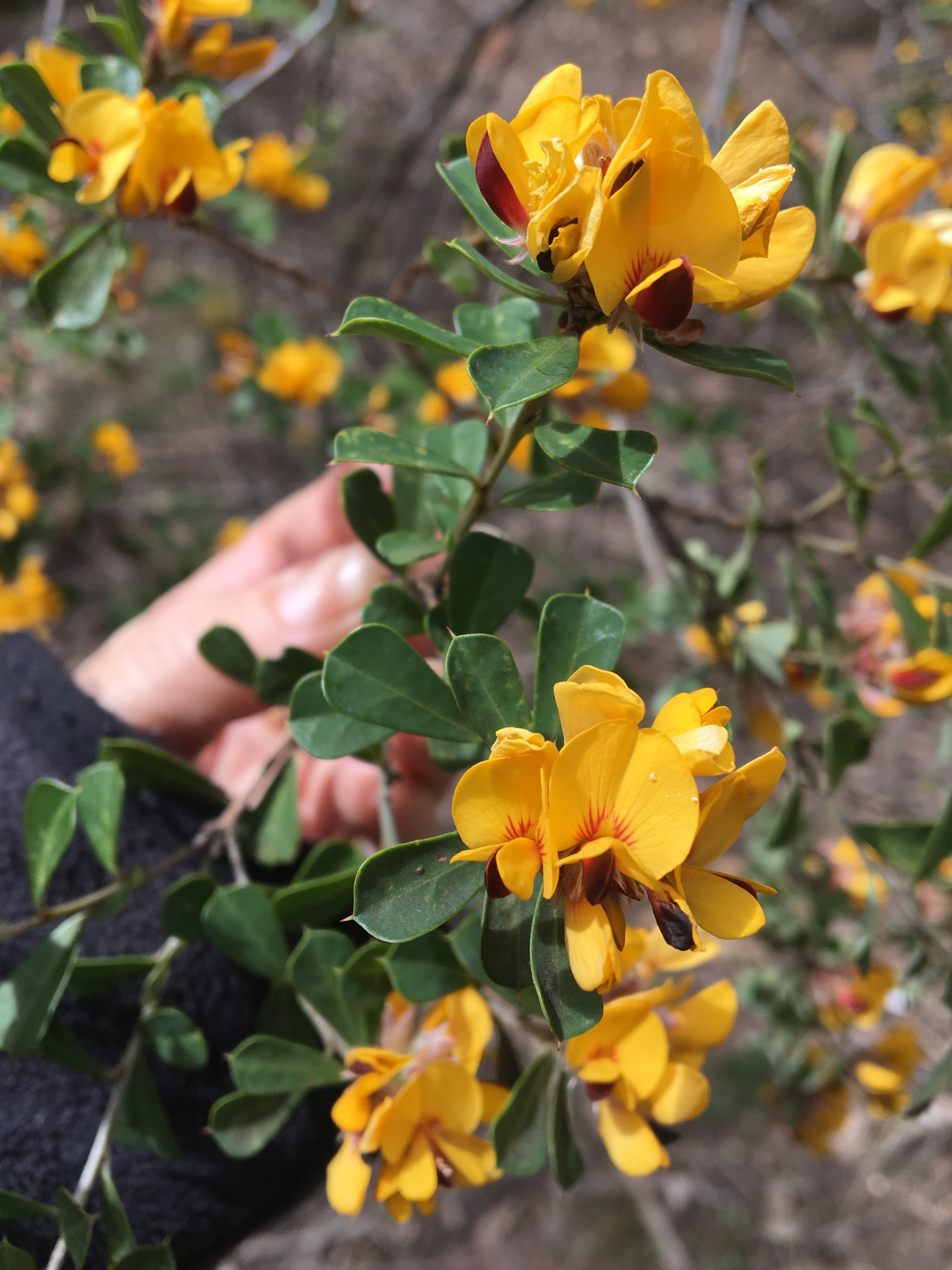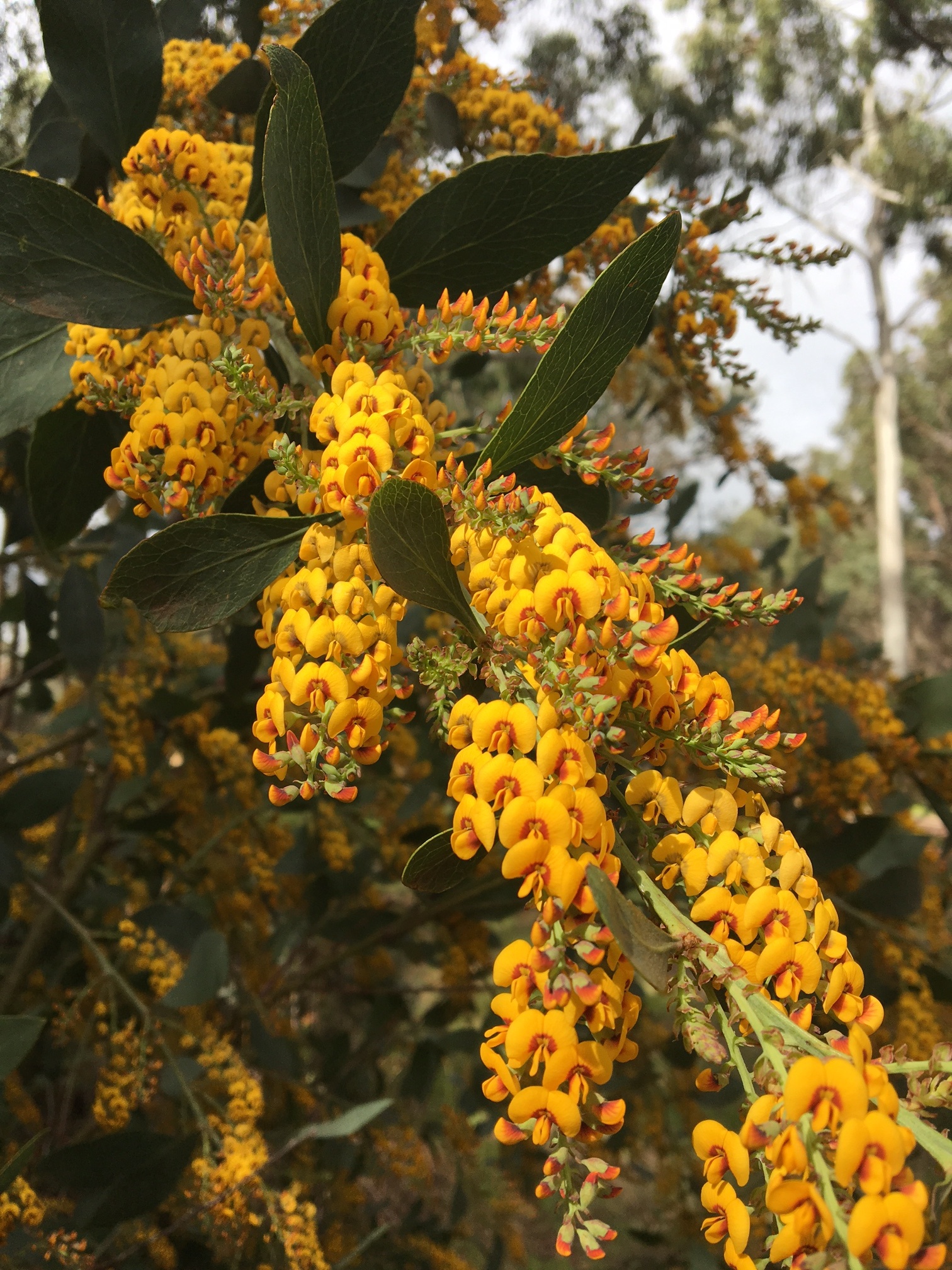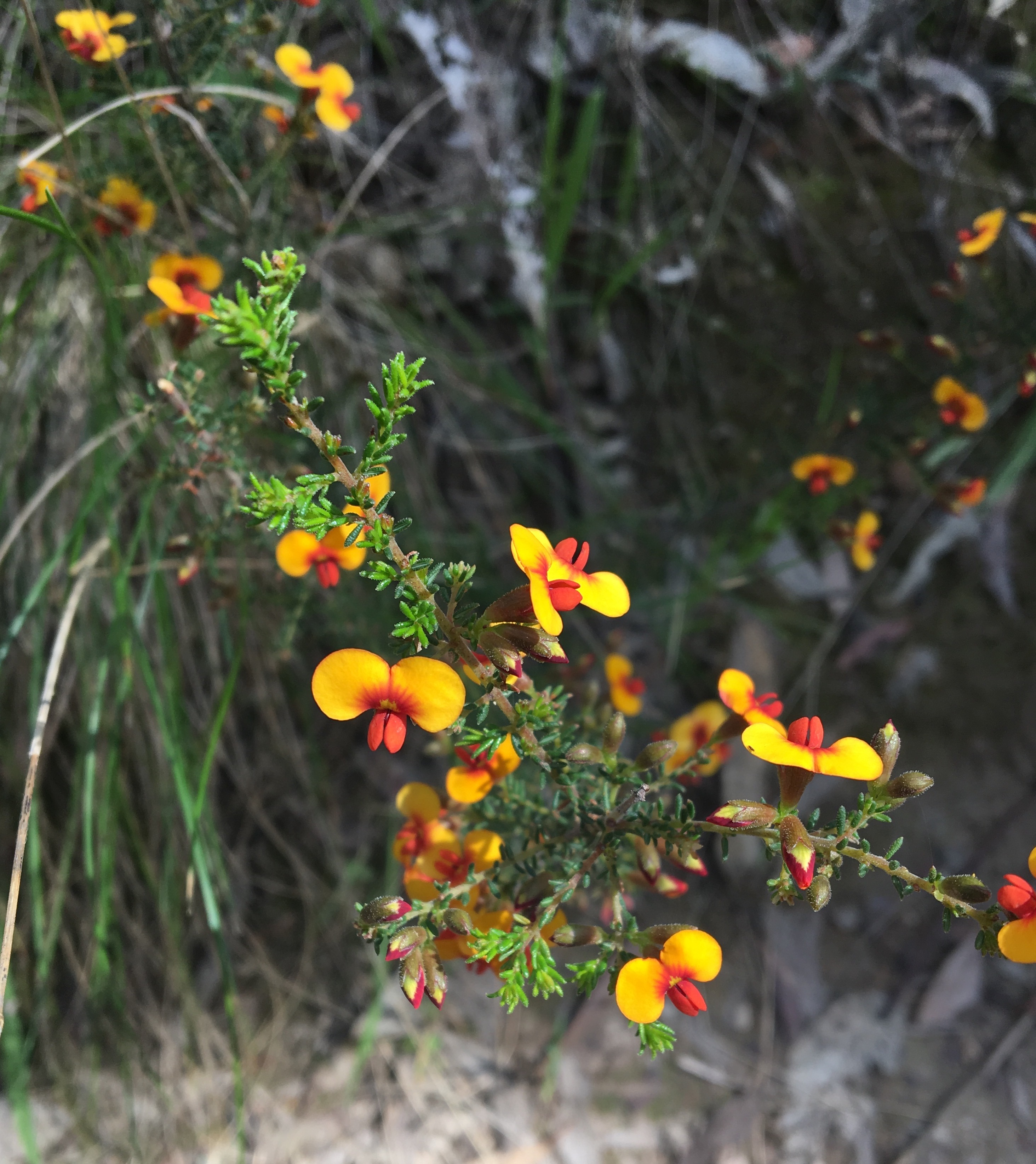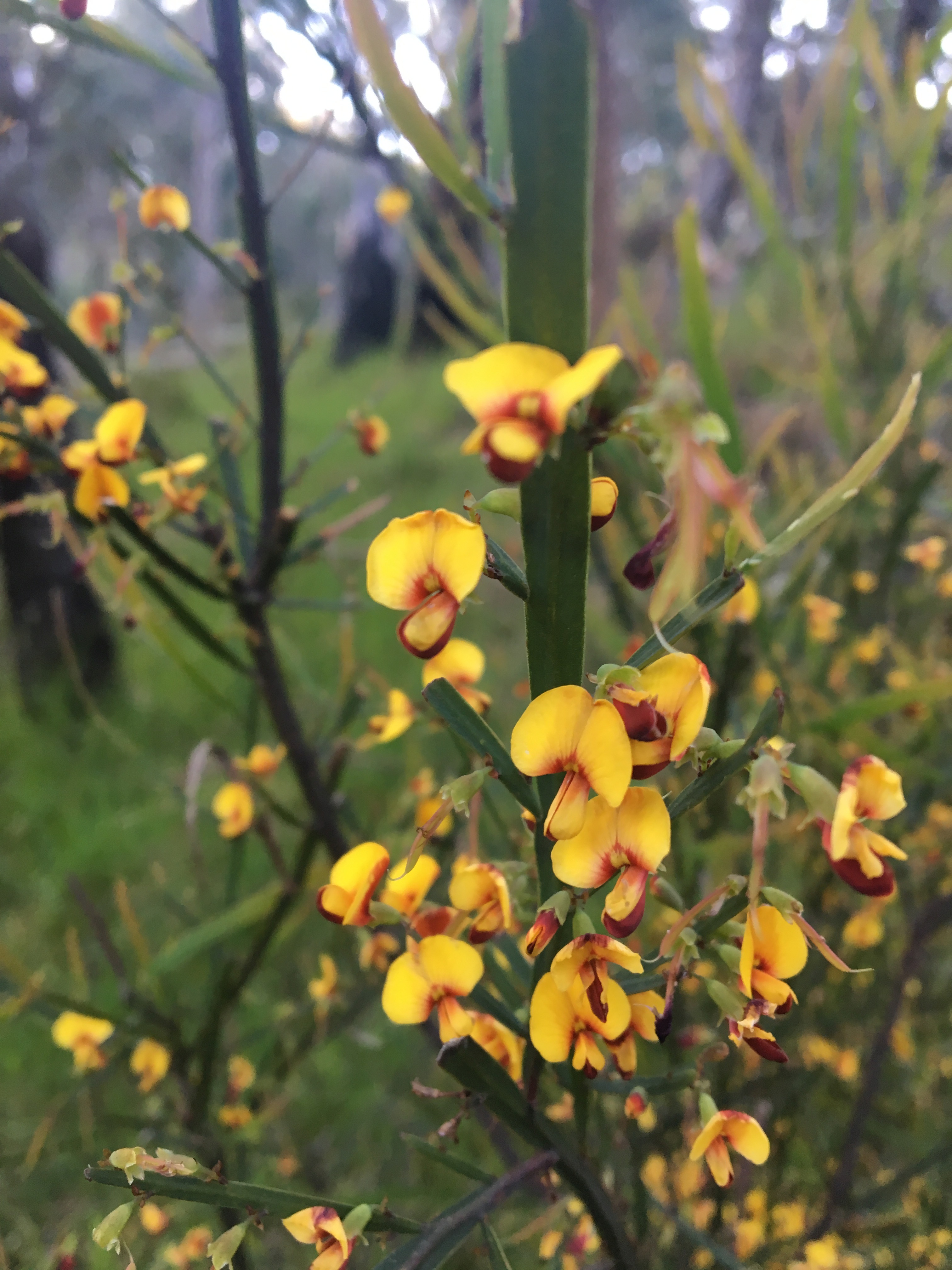This year the various pea species in the region are putting on a wonderful show. The Large leaf bush peas in my local forest are covered in huge, healthy looking yellow and orange flowers. The peas are a very important plant group in our local forest – and surpass even the wattles in their variety of form and colour. There are orange and yellow peas – known colloquially as egg and bacon, and also peas with purple, yellow and red flowers. They occur as small shrubs, large shrubs, ground covers and as creepers – both large and small.
The flowers are pollinated by a variety of tiny native bees and flies, which then provide important food for insect eating birds. The seeds are eaten by birds, reptiles and insects. The leaves are browsed on by Black Wallabies and also hares and deer.
There are bush peas, bitter-peas, flat peas, parrot-peas – which are known b y their common names, and then in some cases the common name and the Latin names are the same –Bossiaeas, Hoveas, and Austral Indigo or Indigofera. I believe it is much easier to learn the Latin! This walk through the pea family in Daylesford and surrounds will therefore be a little Latin heavy.

Large leaf bush pea on my bush block
The bush-peas are Pultenaeas – the large leaf bush pea pictured above is Pultenaea daphnoides. Our other local Pultenaea has a very different form: the Matted Bush-pea (P. pedunculata) has a very tight mat-forming ground cover that can be seen in the drier forests such as around the Blowhole. The Wombat Bush-pea (P. reflexifolia) is listed as Rare as it is only found in the Wombat State Forest region. This small shrub has pea flowers which are quite yellow, and small pointed leaves that point sharply away from the stem, hence the Latin name reflexifolia. Wombat Bush-peas are locally common around Trentham.
Bitter-peas are small to medium shrubs, also with the classic egg and bacon flower – the Narrow-leaf bitter-pea (Daviesia leptophylla) is very common in dry heathy forests such as the slopes above Tipperary Springs. As you head into wetter forests towards Trentham the Gorse Bitter-pea (D. ulicifolia) becomes very common. Gorse bitter-pea is a small shrub with a pointed, dark green leaf . Around Porcupine Ridge, and Glenlyon, we have the Hop Bitter-pea (D. latifolia) with very large, wide leaves and absolutely magnificent sprays of golden and red flowers.

The Hop Bitter-pea – WOW!
Our most common ground cover pea around Daylesford and Trentham is Podolobium procumbens: this has a flower with an almost fluorescent pink tinge. I discovered while researching this article that this is called a Trailing Shaggy-pea – a new common family name for me!
We have two common types of parrot-pea. The Grey parrot-pea (Dillwynia cinerascens)is a lovely low growing shrub also with orange and yellow flowers. The Bushy parrot-pea (D. ramosissima) has tiny leaves and is a sparse, one metre high shrub and very common throughout drier forest types.

Bushy Parrot-pea
Bossiaea are a very interesting group –in Porcupine Ridge, Glenlyon and in the Daylesford area there is a beautiful ground cover known as Matted Bossiaea (Bossiaea buxifolia). Matted bossiaea is locally common here, in most parts of Victoria this plant is actually the very similar Creeping bossiaea (B. prostrata) which just to make things confusing is also found here albeit much less often! In the wet areas such as Trentham and Blackwood the ground cover Bossiaea actually has a climbing habit – the Wiry Bossiaea (B. cordigera). This species is listed as Rare.
Also rare, are the odd- looking shrubs known as Leafless Bossiaea– the pea flowers actually grow out of the flattened green stems! There is a beautiful specimen of Mountain Leafless Bossiaea (B. bracteosa) growing at Tipperary springs. The rarest pea locally is definitely the Wombat Leafless Bossiaea (B. vombata). This leafless pea shrub was rediscovered in 2010 in the vicinity of Spargo Creek by the rare plants team of Wombat Forestcare. This plant was known by the Herbarium to be present in only one location, and the rare plants team discovered several more populations – and were awarded Certificates of Recognition by the then Department of Sustainability and Environment.
It says a lot about our local peas that I haven’t covered all the egg and bacon peas found locally in the above list – nor even had a chance to describe our lovely purple coloured peas – Hovea, Hardenbergia, Indigofera! What beautiful diversity in these forests…

Mountain leafless bossiaea
I am so glad to see this article, Tanya, as the Pea family has me beaten. I agree about Latin being easier, but suspect I have used Daviesia too often!